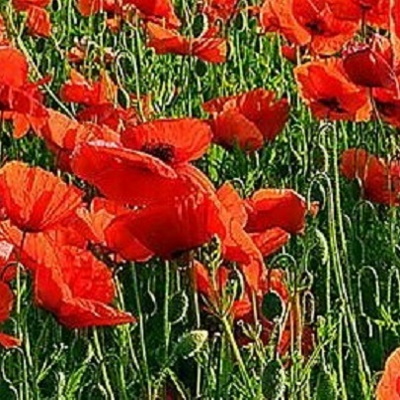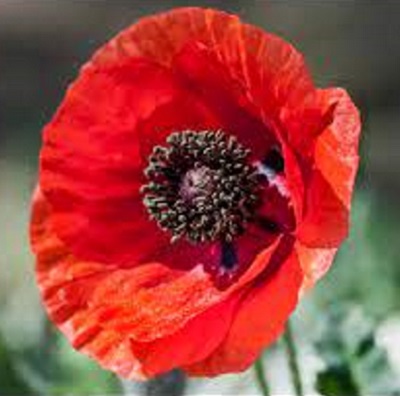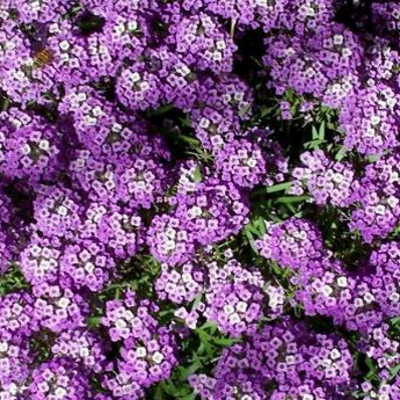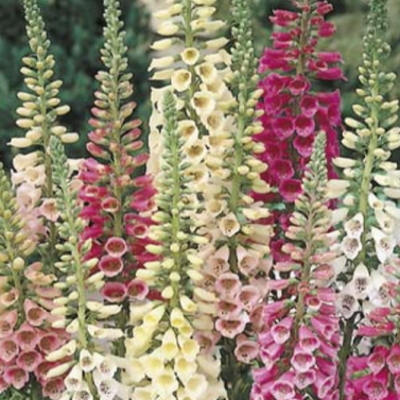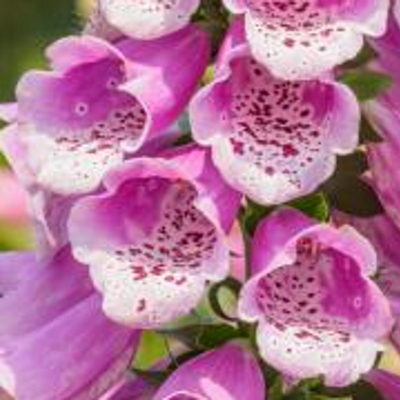Your delivery will be free if your order is $25.00 or more
-
-
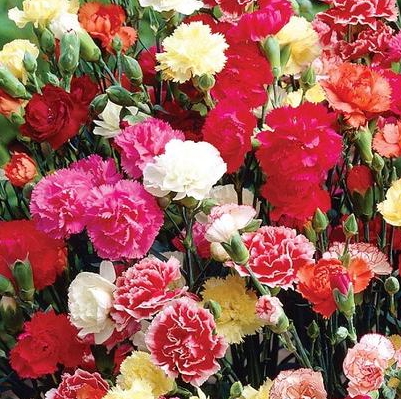
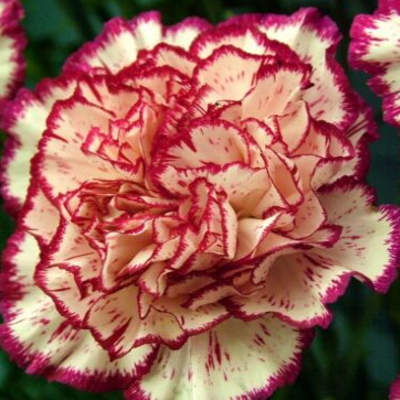 Chabauds Giant Carnation is a half-hardy biennial prized for its long bloom season. Large flowers with lovely spicy, clove-like fragrance bloom in many shades of crimson, red, rose, pink, yellow, and white. Carnations grown in groups make a striking attraction in gardens. For early blooms, start indoors 6-8 weeks before the last frost. Thin or transplant when 15-25 cm tall. This tender perennial can overwinter in milder climates. To overwinter in Zone 3b to 4a cover with a thick layer of mulch but remove mulch in early spring. One of the garden favourites-Chabauds Giant Carnation does not readily self-sow. Harvest early spent blossom head by cutting stem near the ground and hang dry with a paper bag tied around the stem to catch seeds that may drop.
Chabauds Giant Carnation is a half-hardy biennial prized for its long bloom season. Large flowers with lovely spicy, clove-like fragrance bloom in many shades of crimson, red, rose, pink, yellow, and white. Carnations grown in groups make a striking attraction in gardens. For early blooms, start indoors 6-8 weeks before the last frost. Thin or transplant when 15-25 cm tall. This tender perennial can overwinter in milder climates. To overwinter in Zone 3b to 4a cover with a thick layer of mulch but remove mulch in early spring. One of the garden favourites-Chabauds Giant Carnation does not readily self-sow. Harvest early spent blossom head by cutting stem near the ground and hang dry with a paper bag tied around the stem to catch seeds that may drop. -
Out of stock
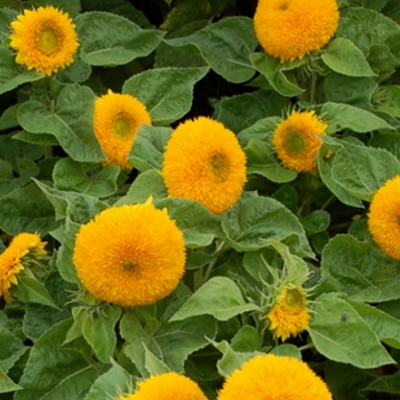
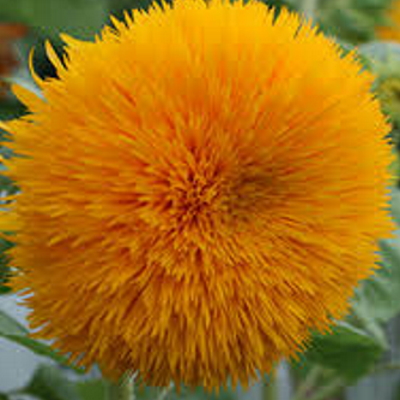 Sunflower ‘Teddy Bear’ is a short, bushy plant with fluffy, golden-yellow blooms that appear from mid-summer to the first frost in autumn. The mature size of Teddy Bear sunflower plants is 4 to 5 feet (1.4 m.). Growing Teddy Bear sunflowers by seed isn’t complicated. The most important thing is to plant seeds where your Teddy Bear sunflower plants will be exposed to full sunlight. Well-drained soil is also an absolute requirement for any type of sunflower. Plant Teddy Bear sunflower seeds after you’re sure all danger of frost has passed. Prepare the soil prior to planting sunflowers by digging a generous amount of compost, well-rotted manure, or other organic matter into the top 15-20 cm of soil. Sow seeds in groups of three, at a depth of ½ inch. Thin the plants to a distance of 40-60 cm when the true leaves appear. Water as needed to keep the soil moist, but not drenched, until your sunflower ‘Teddy Bear’ plants are established Sunflower seeds should be direct sown in the garden. If starting 3-4 weeks early plant in large cow pots so roots are not disturbed when transplanting into the garden.
Sunflower ‘Teddy Bear’ is a short, bushy plant with fluffy, golden-yellow blooms that appear from mid-summer to the first frost in autumn. The mature size of Teddy Bear sunflower plants is 4 to 5 feet (1.4 m.). Growing Teddy Bear sunflowers by seed isn’t complicated. The most important thing is to plant seeds where your Teddy Bear sunflower plants will be exposed to full sunlight. Well-drained soil is also an absolute requirement for any type of sunflower. Plant Teddy Bear sunflower seeds after you’re sure all danger of frost has passed. Prepare the soil prior to planting sunflowers by digging a generous amount of compost, well-rotted manure, or other organic matter into the top 15-20 cm of soil. Sow seeds in groups of three, at a depth of ½ inch. Thin the plants to a distance of 40-60 cm when the true leaves appear. Water as needed to keep the soil moist, but not drenched, until your sunflower ‘Teddy Bear’ plants are established Sunflower seeds should be direct sown in the garden. If starting 3-4 weeks early plant in large cow pots so roots are not disturbed when transplanting into the garden. -
Out of stock
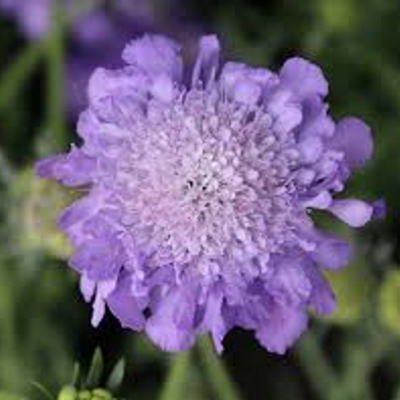
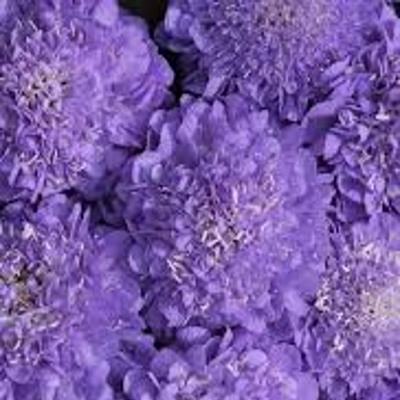
a.k.a Pincushion Flower
Elegant and uniform cut flower.
Matures in 90-100 days Package contains: 50 Seeds1 1/2–2 1/2", lavender-blue flowers stand tall on strong, slender stems. A dramatic addition to any bouquet or garden. Also known as mourning bride -
Out of stock
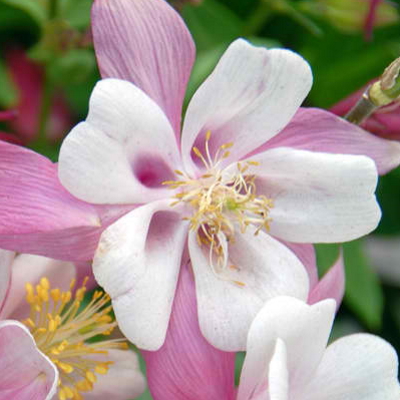 Beautiful pastel columbine seeds approximately 100 count. Learn: How to grow Columbine plants
Beautiful pastel columbine seeds approximately 100 count. Learn: How to grow Columbine plants -
Out of stock
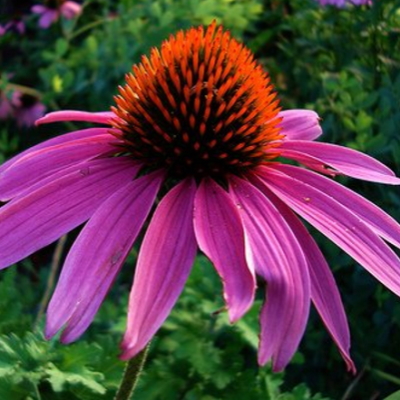 Purple coneflowers are found in many flower gardens. Purple coneflower (Echinacea purpurea) in the garden or flower bed draws bees and butterflies, ensuring that nearby plants have plenty of pollinators. The plant also provides a tall background or repeating rows of large (often 6 inches across) purple, daisy-like flowers. The sturdy stalks, which may reach 5 feet in height, rarely bend or require staking for an upright appearance. Coneflower plants may actually display pink flowers, when the cultivar Echinacea purpurea ‘Pink Double Delight’ is planted.
Purple coneflowers are found in many flower gardens. Purple coneflower (Echinacea purpurea) in the garden or flower bed draws bees and butterflies, ensuring that nearby plants have plenty of pollinators. The plant also provides a tall background or repeating rows of large (often 6 inches across) purple, daisy-like flowers. The sturdy stalks, which may reach 5 feet in height, rarely bend or require staking for an upright appearance. Coneflower plants may actually display pink flowers, when the cultivar Echinacea purpurea ‘Pink Double Delight’ is planted. -
Out of stock
 Single daisy-like flowers in shades of pink, red, rose, or white completely cover the 75 cm high bushy plants from May through June. Gorgeous spring and summer colour in sun or partial shade. Invaluable for cutting, cut as soon as colour shows. If cutting for dried flowers harvest immediately after bloom opens. Avoid high fertility. Moist, well-drained soil is best–try raised beds or containers if your soil is heavy. Hardy to Zone 5 with protection. These daisies often self-seed and interestingly, direct sown or self-sown established plants are hardier than transplants.
Single daisy-like flowers in shades of pink, red, rose, or white completely cover the 75 cm high bushy plants from May through June. Gorgeous spring and summer colour in sun or partial shade. Invaluable for cutting, cut as soon as colour shows. If cutting for dried flowers harvest immediately after bloom opens. Avoid high fertility. Moist, well-drained soil is best–try raised beds or containers if your soil is heavy. Hardy to Zone 5 with protection. These daisies often self-seed and interestingly, direct sown or self-sown established plants are hardier than transplants. -
Out of stock
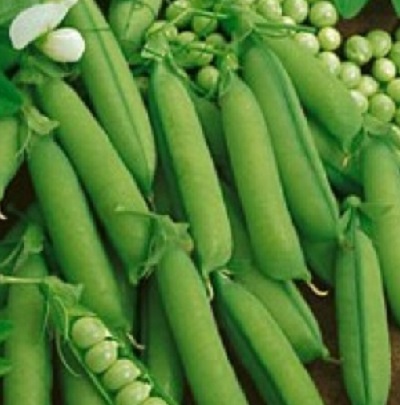 Great for both Spring and Fall planting! Matures in 50-60 days. Expect heavy yields of round, straight, pale green pods, each containing five to eight smooth peas. Peas prefer full sun to partial shade. Space peas 2.5cm-4cm apart. This shorter variety only reaching 90cm (3 feet) a short trellis can be used. They grow best when planted on the crowded side. These are great when eaten fresh in the garden and take only 5-10 days to germinate. They offer 5-7 peas per pod and have a sweet and delicious flavour.
Great for both Spring and Fall planting! Matures in 50-60 days. Expect heavy yields of round, straight, pale green pods, each containing five to eight smooth peas. Peas prefer full sun to partial shade. Space peas 2.5cm-4cm apart. This shorter variety only reaching 90cm (3 feet) a short trellis can be used. They grow best when planted on the crowded side. These are great when eaten fresh in the garden and take only 5-10 days to germinate. They offer 5-7 peas per pod and have a sweet and delicious flavour. -
Out of stock
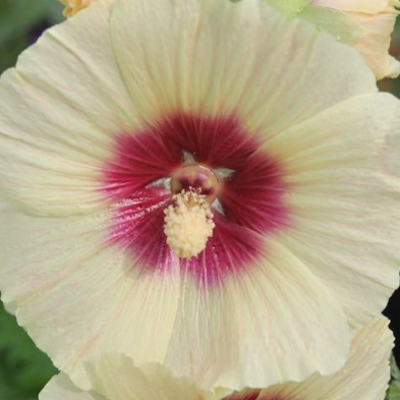
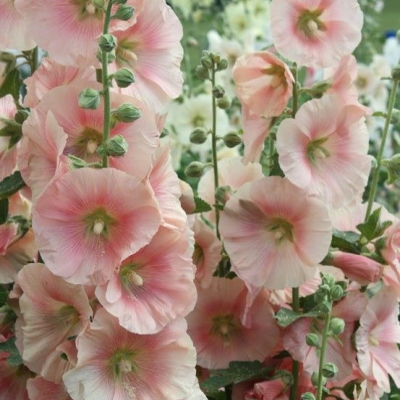 Hollyhock Seeds -Coral & Indian Spring Mix The semi-tall stalks of Indian Spring Hollyhock are filled with single and semi-double blooms in shades of pink, coral, white, cream, purple, and lavender. Prolifically blooming, Indian Spring Mix is known to bloom in its first year, which is unusual for Hollyhocks.
Hollyhock Seeds -Coral & Indian Spring Mix The semi-tall stalks of Indian Spring Hollyhock are filled with single and semi-double blooms in shades of pink, coral, white, cream, purple, and lavender. Prolifically blooming, Indian Spring Mix is known to bloom in its first year, which is unusual for Hollyhocks. -
Out of stock
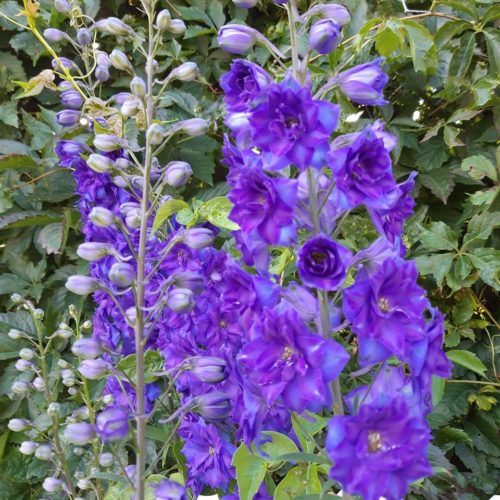 Matures 130-150 days: Also known as Pacific Coast hybrids, Delphinium elatum "Pacific Giant" is a group of regal delphiniums with tall, spiky blooms available in the colors shown. At maturity, the plants reach impressive heights of 1.5-2.5 meters "Pacific Giant" delphiniums are suitable for growing in plant hardiness zones 2 through 9. Long flower-filled spikes bloom in a beautiful blue. The flowers populating the spikes are symmetrically shaped, with huge 8 cm blooms. This delphinium also has mildew resistance.
Matures 130-150 days: Also known as Pacific Coast hybrids, Delphinium elatum "Pacific Giant" is a group of regal delphiniums with tall, spiky blooms available in the colors shown. At maturity, the plants reach impressive heights of 1.5-2.5 meters "Pacific Giant" delphiniums are suitable for growing in plant hardiness zones 2 through 9. Long flower-filled spikes bloom in a beautiful blue. The flowers populating the spikes are symmetrically shaped, with huge 8 cm blooms. This delphinium also has mildew resistance. -
Out of stock
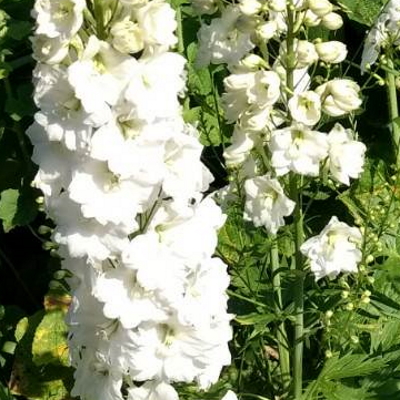
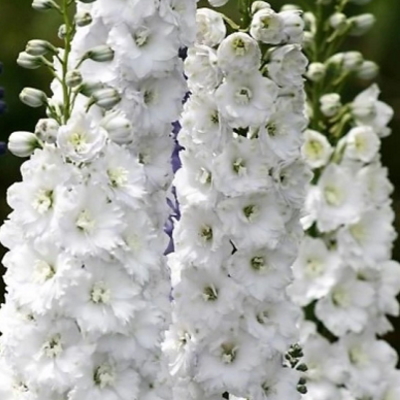 An F1 hybrid breeding breakthrough. Excellent bloom production during short days for cut flowers. GREENHOUSE: Sow in Jan. or early Feb. Freeze seed for 24 hrs. just before sowing, to break dormancy. Use Jiffy Mix or fine sand for a growing medium. Germinate in cool soil at 54°F/12°C for 20 days, according to color (best colors are smallest seedlings). High temp. will prevent germ. Grow seedlings cool, at 60°F/16°C days and 50°F/10°C nights. DIRECT SOWING: Sow outside in late August in cool soil. Freeze seed 24 hours before sowing. Do not pinch the flower heads. For improved blossoms, add lime to the soil each year.
An F1 hybrid breeding breakthrough. Excellent bloom production during short days for cut flowers. GREENHOUSE: Sow in Jan. or early Feb. Freeze seed for 24 hrs. just before sowing, to break dormancy. Use Jiffy Mix or fine sand for a growing medium. Germinate in cool soil at 54°F/12°C for 20 days, according to color (best colors are smallest seedlings). High temp. will prevent germ. Grow seedlings cool, at 60°F/16°C days and 50°F/10°C nights. DIRECT SOWING: Sow outside in late August in cool soil. Freeze seed 24 hours before sowing. Do not pinch the flower heads. For improved blossoms, add lime to the soil each year. -
Out of stock
 Tiny blue flowers are an iconic addition to any garden. Although not a ‘true’ forget-me-not, this species has very similar flowers. This easy-to-grow annual blooms just weeks after planting and grows in almost any sunny spot. Chinese Forget-Me-Not attracts bees, butterflies, and hummingbirds to the garden and makes for gorgeous cut flowers. Self-seeding annual.
Tiny blue flowers are an iconic addition to any garden. Although not a ‘true’ forget-me-not, this species has very similar flowers. This easy-to-grow annual blooms just weeks after planting and grows in almost any sunny spot. Chinese Forget-Me-Not attracts bees, butterflies, and hummingbirds to the garden and makes for gorgeous cut flowers. Self-seeding annual. -
Out of stock
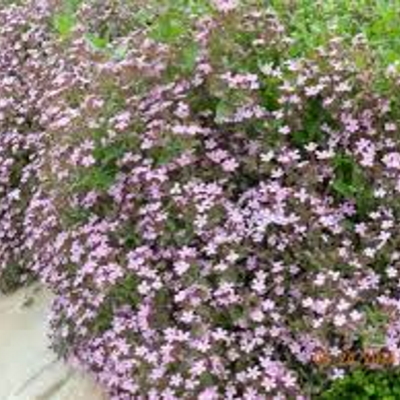
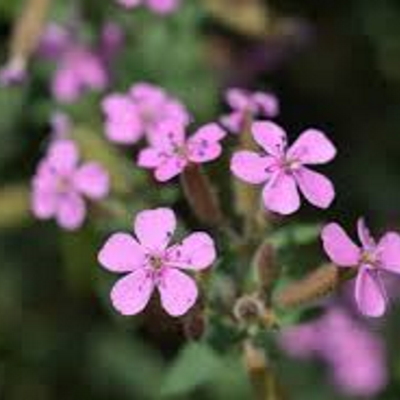 Soapwort is a favourite perennial for cool-alpine and rock gardens. This semi-evergreen blooms from May to August with five-petaled pink flowers joined at the base to form a nectar tube that is highly attractive to bees. Provide good drainage. The roots really can be used to make soap. Rock Soapwort looks marvelous in containers, but best in situations when it can trail and seed itself. Sturdy and easy to grow. Stems are thicker, stronger, taller, and easier to manage than those of annual gypsophila, an otherwise similar flower. 3/4 to 1" dusty pink blooms float above gray-blue, waxy foliage. Branching plant habit. Also known as cow soapwort.
Soapwort is a favourite perennial for cool-alpine and rock gardens. This semi-evergreen blooms from May to August with five-petaled pink flowers joined at the base to form a nectar tube that is highly attractive to bees. Provide good drainage. The roots really can be used to make soap. Rock Soapwort looks marvelous in containers, but best in situations when it can trail and seed itself. Sturdy and easy to grow. Stems are thicker, stronger, taller, and easier to manage than those of annual gypsophila, an otherwise similar flower. 3/4 to 1" dusty pink blooms float above gray-blue, waxy foliage. Branching plant habit. Also known as cow soapwort. -
-
 This cheerful variety will be the star of your cutting garden! An unexpected beauty, it has seemingly endless combinations of red, rose, scarlet, lavender, gold, yellow, salmon, orange, and pink. A perfect choice for beautiful bouquets all summer. Dahlia Flowered Mix zinnias are super showy border plants that grow 90-110 cm tall
This cheerful variety will be the star of your cutting garden! An unexpected beauty, it has seemingly endless combinations of red, rose, scarlet, lavender, gold, yellow, salmon, orange, and pink. A perfect choice for beautiful bouquets all summer. Dahlia Flowered Mix zinnias are super showy border plants that grow 90-110 cm tall -
Out of stock
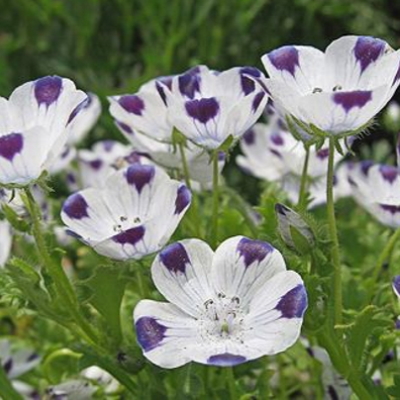
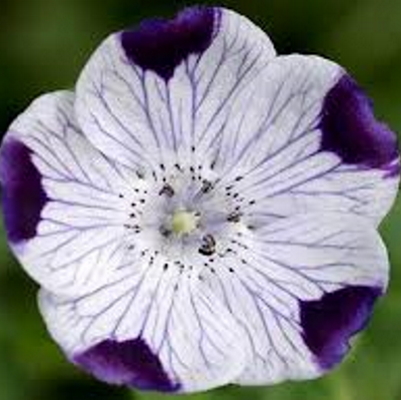 Five spot wildflowers are named for their distinct flowers: 2.5 cm light blue on white blossoms of five petals, each of which is tipped with a vivid, deep purple spot. They are reasonably compact plants that grow to 30 cm high and 20 cm wide and do not spread over the course of the summer. They prefer cool climates, germinating best in soil temperatures of 13-18 C. Perfect for cool springs. They should be able to survive if given lots of shade. They are annuals, and they’ll die back with the first frost. If allowed to die back naturally they reseeds and you will have new plants next year. They bloom consistently and impressively all spring long.
Five spot wildflowers are named for their distinct flowers: 2.5 cm light blue on white blossoms of five petals, each of which is tipped with a vivid, deep purple spot. They are reasonably compact plants that grow to 30 cm high and 20 cm wide and do not spread over the course of the summer. They prefer cool climates, germinating best in soil temperatures of 13-18 C. Perfect for cool springs. They should be able to survive if given lots of shade. They are annuals, and they’ll die back with the first frost. If allowed to die back naturally they reseeds and you will have new plants next year. They bloom consistently and impressively all spring long. -
-
Out of stock

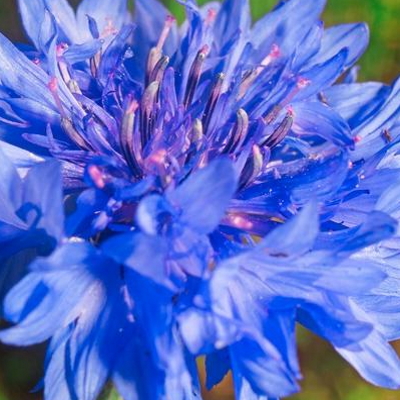 Bachelor's Button or Cornflower-It's hard to beat the colours of the bachelor's button. It got the name "cornflower" because it grew as a weed in cornfields, but you may welcome it in your garden. It does spread, but it is easy to pull out any extras. This tall 90 cm mix comes in the colours of purple, blue, pink and white provide papery blossoms that bring summer colour to the garden. They're attractive planted in a group in a corner or open spot in the garden. Deadhead regularly to prolong blooming. Plant periodically over spring to prolong bloom times.
Bachelor's Button or Cornflower-It's hard to beat the colours of the bachelor's button. It got the name "cornflower" because it grew as a weed in cornfields, but you may welcome it in your garden. It does spread, but it is easy to pull out any extras. This tall 90 cm mix comes in the colours of purple, blue, pink and white provide papery blossoms that bring summer colour to the garden. They're attractive planted in a group in a corner or open spot in the garden. Deadhead regularly to prolong blooming. Plant periodically over spring to prolong bloom times. -
Out of stock
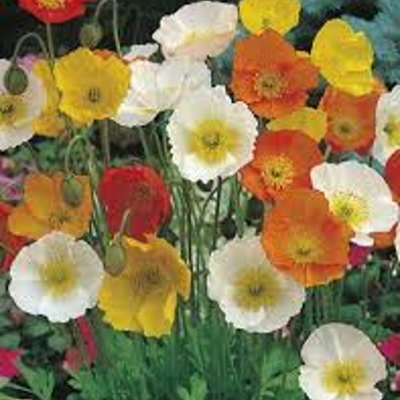 Papaver nudicaule. The Iceland Poppy is a hardy short-lived perennial. It self sows easily so will last for years to come. The cup-shaped blooms have a texture like crepe paper and appear in a range of subdued pastel colours; apricot, gold, tangerine, and white. Sow Iceland Poppy seeds in early spring or late fall where they are to grow permanently. The flower stalks grow to around 30cm tall and are among the longest-lasting poppies as cut flowers. Use a candlestick to seal the cut stem to prolong them as cut flowers. They are highly attractive to bees. Plant in late fall or early spring. Poppy seeds need to be cold stratified to germinate. Poppies only need soil that is ordinary and moist, but well-drained. The seeds should not be planted deeply; they just need to be compressed into the soil, as they need light to germinate. The best method for planting is to mix one part seed with 5 parts sand and scatter over the prepared growing area.
Papaver nudicaule. The Iceland Poppy is a hardy short-lived perennial. It self sows easily so will last for years to come. The cup-shaped blooms have a texture like crepe paper and appear in a range of subdued pastel colours; apricot, gold, tangerine, and white. Sow Iceland Poppy seeds in early spring or late fall where they are to grow permanently. The flower stalks grow to around 30cm tall and are among the longest-lasting poppies as cut flowers. Use a candlestick to seal the cut stem to prolong them as cut flowers. They are highly attractive to bees. Plant in late fall or early spring. Poppy seeds need to be cold stratified to germinate. Poppies only need soil that is ordinary and moist, but well-drained. The seeds should not be planted deeply; they just need to be compressed into the soil, as they need light to germinate. The best method for planting is to mix one part seed with 5 parts sand and scatter over the prepared growing area. -
Out of stock
 Enjoy a baby's breath that is actually pink! Plant in your sunny perennial garden and watch as large panicles of true light pink flowers splash your garden from early through midsummer. This upright, well-branched, bush type grows up to 3' tall. Use as a filler plant to cover dying bulb foliage or for perennials that go dormant in the summer months. The pretty pink flowers also are perfect in floral arrangements! Makes an excellent dried flower.
Enjoy a baby's breath that is actually pink! Plant in your sunny perennial garden and watch as large panicles of true light pink flowers splash your garden from early through midsummer. This upright, well-branched, bush type grows up to 3' tall. Use as a filler plant to cover dying bulb foliage or for perennials that go dormant in the summer months. The pretty pink flowers also are perfect in floral arrangements! Makes an excellent dried flower. -
Out of stock
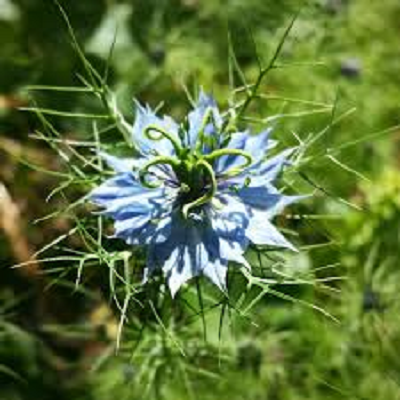
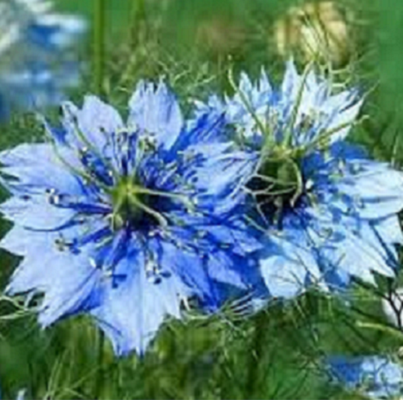 Nigella damascena. Persian Jewels Nigella seeds are also known as Love-in-a-Mist. Its delicate appearance belies its hardy, dependable nature. Pale as a baby flower, Persian Jewel matures to intense shades of violet, blue, white, and pastels in between. Each flower emerges from a tangle of lacy foliage. After blooming, curious-looking fruits ripen, dry, and eventually release seeds for the next season. These distinctive seed heads can be dried for flower arrangements. Everlasting flowers are grown especially for its spiky decorative seed pods. Germinates 10–14 days at 60°. Grow on at 60–65°. Set transplants 6–9" apart. For continuous bloom, direct seed weekly until June. Nigella grows 20–50cm (8–20") tall.
Nigella damascena. Persian Jewels Nigella seeds are also known as Love-in-a-Mist. Its delicate appearance belies its hardy, dependable nature. Pale as a baby flower, Persian Jewel matures to intense shades of violet, blue, white, and pastels in between. Each flower emerges from a tangle of lacy foliage. After blooming, curious-looking fruits ripen, dry, and eventually release seeds for the next season. These distinctive seed heads can be dried for flower arrangements. Everlasting flowers are grown especially for its spiky decorative seed pods. Germinates 10–14 days at 60°. Grow on at 60–65°. Set transplants 6–9" apart. For continuous bloom, direct seed weekly until June. Nigella grows 20–50cm (8–20") tall. -
Out of stock
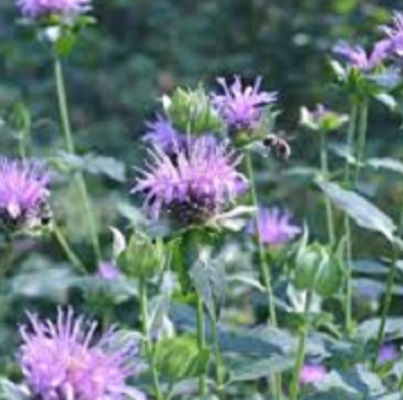 A bee magnet, softly aromatic leaves, and colourful flower heads are just a few lovely characteristics of Bee Balm (Monarda). Guaranteed to create a great impact when planted in masses with its starry explosions of colour burst from mid-summer through until the last frost. Known as bergamot. Leaves can be used in the kitchen before flowers appear.
A bee magnet, softly aromatic leaves, and colourful flower heads are just a few lovely characteristics of Bee Balm (Monarda). Guaranteed to create a great impact when planted in masses with its starry explosions of colour burst from mid-summer through until the last frost. Known as bergamot. Leaves can be used in the kitchen before flowers appear. -
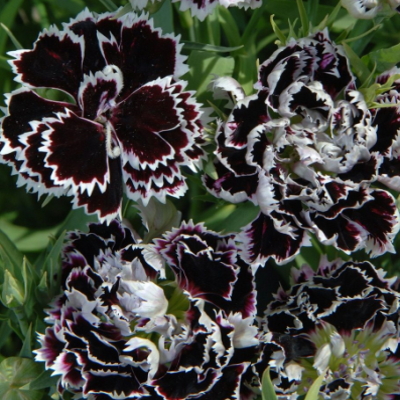 Hardy annual. Dainty, fully double blooms in deepest maroon, almost black, edged in brilliant white. The margins of the petals are heavily frilled, and the overall effect is one of great dignity and refinement, yet stunning beauty. The 2-3 cm blooms are sweetly fragrant. Makes a fine cut flower but really shines in a massed planting. Compact plants, the flowers are held above the grass-like foliage, reaching about a foot in height.
Hardy annual. Dainty, fully double blooms in deepest maroon, almost black, edged in brilliant white. The margins of the petals are heavily frilled, and the overall effect is one of great dignity and refinement, yet stunning beauty. The 2-3 cm blooms are sweetly fragrant. Makes a fine cut flower but really shines in a massed planting. Compact plants, the flowers are held above the grass-like foliage, reaching about a foot in height. -
Out of stock
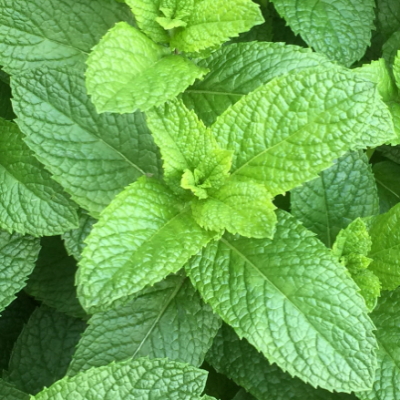 Spearmint came to North America with the Colonists. They used mint teas medicinally for headaches, indigestion and to help them sleep. Mint is also an excellent culinary addition and makes a great tea for the pure pleasure of it. As a general rule, mint family plants root vigorously when allowed to grow freely and can be invasive. Many gardeners grow them in containers to keep them in check.
Spearmint came to North America with the Colonists. They used mint teas medicinally for headaches, indigestion and to help them sleep. Mint is also an excellent culinary addition and makes a great tea for the pure pleasure of it. As a general rule, mint family plants root vigorously when allowed to grow freely and can be invasive. Many gardeners grow them in containers to keep them in check. -
-
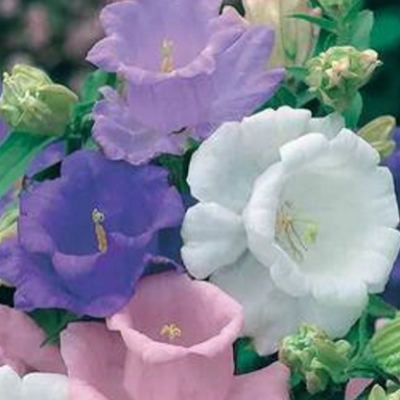 Canterbury Bells Cup and Saucer Mix is a hardy, attractive biennial flowering plant. Canterbury Bells seeds are a good way to establish this flowering bellflower mix that produces bell-shaped flowers with a flat base in various shades of blue, pink, and white. Canterbury Bells is the biennial, so the plant produces foliage the first year and flowers the second year blooming from spring to early summer.
Canterbury Bells Cup and Saucer Mix is a hardy, attractive biennial flowering plant. Canterbury Bells seeds are a good way to establish this flowering bellflower mix that produces bell-shaped flowers with a flat base in various shades of blue, pink, and white. Canterbury Bells is the biennial, so the plant produces foliage the first year and flowers the second year blooming from spring to early summer. -
-
Out of stock
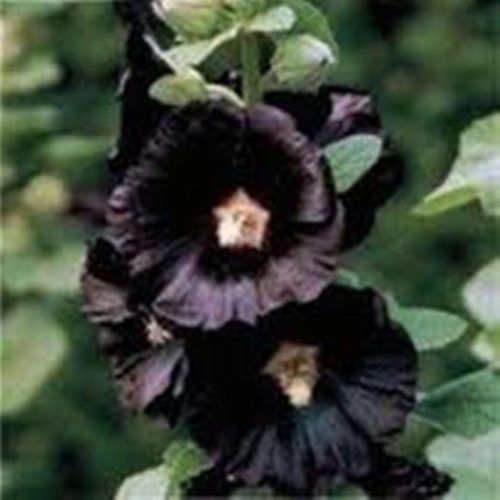 Biennial. This traditional variety is shockingly beautiful and richly coloured with its near-black flowers with just a hint of red. Gorgeous planted in the back of your flower bed or next to white buildings white flowers. A must for historical gardens.
Biennial. This traditional variety is shockingly beautiful and richly coloured with its near-black flowers with just a hint of red. Gorgeous planted in the back of your flower bed or next to white buildings white flowers. A must for historical gardens. -
Out of stock
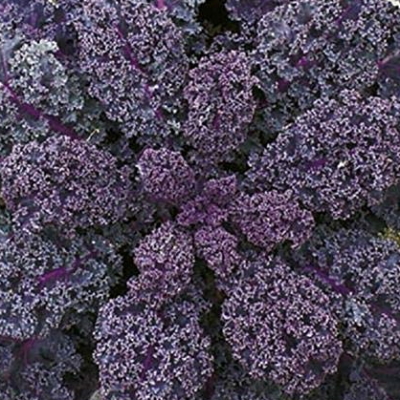
The broad, frilly, purple leaves grow on 60-90 cm tall, upright stalks. Red color on a blue-green background. Great for baby leaf and bunching. Scarlet has great flavour either as baby leaf or mature kale, and the flavour improves after frost. This kale is a must in an organic garden and is highly decorative in salads and stir-fries. Plant Scarlet kale in cow pots 4-6 weeks before the last frost, direct sow in early spring, and in mid-July for a fall crop. Scarlet Kale can grow 60-90 cm high. Boiling kale loses much of the nutritious properties while steaming and microwaving keep more cancer-fighting properties.
-
Out of stock
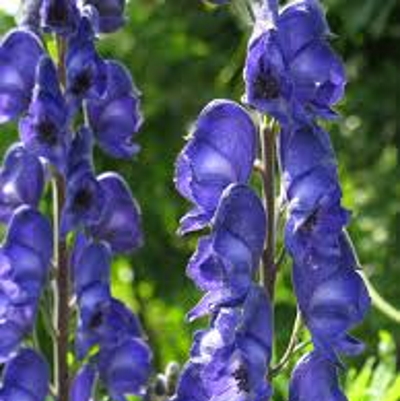 The monkshood plant is an herbaceous wildflower that can be found growing in mountain meadows throughout the northern hemisphere. The plant gets its name from the shape of the posterior sepal of the flowers, which resembles the cowls worn by monks. Also known as wolfsbane and Aconitum, monkshood has become popular as a garden addition because of its purple/blue flowers and attractive foliage. Growing 2 to 4 feet (0.5 to 1 m.) tall and 1 to 2 feet (0.5 m.) wide, perennial monkshood is best grown as a background plant. The leaves of the monkshood plant are palmate, meaning hand-shaped, with lobed “fingers” that often have toothed edges and vary in color from light to dark green. In late summer or early fall, it sends up showy spires of purple/blue flowers. Monkshead is not invasive and is both deer and rabbit resistant. However, monkshood, or wolfsbane, is moderately difficult to grow and once planted, doesn’t like to be moved so the best way to grow monkshood is to choose your spot carefully. It sometimes takes a while for it to become established.
The monkshood plant is an herbaceous wildflower that can be found growing in mountain meadows throughout the northern hemisphere. The plant gets its name from the shape of the posterior sepal of the flowers, which resembles the cowls worn by monks. Also known as wolfsbane and Aconitum, monkshood has become popular as a garden addition because of its purple/blue flowers and attractive foliage. Growing 2 to 4 feet (0.5 to 1 m.) tall and 1 to 2 feet (0.5 m.) wide, perennial monkshood is best grown as a background plant. The leaves of the monkshood plant are palmate, meaning hand-shaped, with lobed “fingers” that often have toothed edges and vary in color from light to dark green. In late summer or early fall, it sends up showy spires of purple/blue flowers. Monkshead is not invasive and is both deer and rabbit resistant. However, monkshood, or wolfsbane, is moderately difficult to grow and once planted, doesn’t like to be moved so the best way to grow monkshood is to choose your spot carefully. It sometimes takes a while for it to become established. -
Out of stock
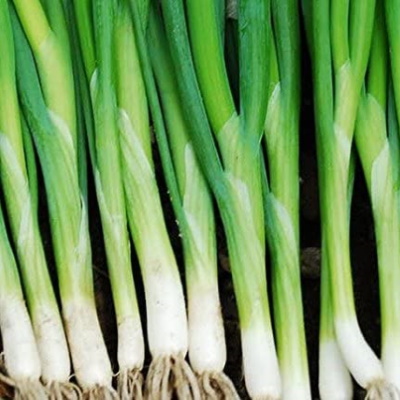 Parade Organic scallion seeds are CERTIFIED ORGANIC! For an open-pollinated variety, Parade shows remarkable uniformity, with little or no bulbing. Dark green, almost waxy leaves grow vigorously with white stalks that can be made longer by hilling up soil around them. Expect upright growth with no branching. Parade looks great as a bunching onion on the market table, but it performs perfectly in the home garden. Provide frost protection with a cloche tunnel, and you can harvest this scallion all winter long. Parade is one of the best scallions to grow if you plan on saving seeds for next season. To do this, wait for some of your scallions to overwinter. Their flowers are formed after a cold period. Be aware that they can cross-pollinate with other members of Allium fistulosum as well as A. cepa, so they need to be isolated if both are in bloom at the same time.
Parade Organic scallion seeds are CERTIFIED ORGANIC! For an open-pollinated variety, Parade shows remarkable uniformity, with little or no bulbing. Dark green, almost waxy leaves grow vigorously with white stalks that can be made longer by hilling up soil around them. Expect upright growth with no branching. Parade looks great as a bunching onion on the market table, but it performs perfectly in the home garden. Provide frost protection with a cloche tunnel, and you can harvest this scallion all winter long. Parade is one of the best scallions to grow if you plan on saving seeds for next season. To do this, wait for some of your scallions to overwinter. Their flowers are formed after a cold period. Be aware that they can cross-pollinate with other members of Allium fistulosum as well as A. cepa, so they need to be isolated if both are in bloom at the same time. -
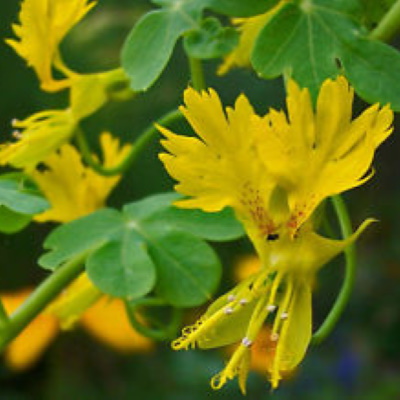 Use seeds, leaves, and flowers. Bright, sunny colors: yellow, pink, red, and orange. The edible flowers are popular for salads and as a garnish; the peppery leaves are also very flavorful. A colourful garden favorite. Flowers all summer long. Keep watered during dry weather, and do not fertilize. Excellent in window boxes, hanging baskets, or raised beds. Suitable for xeriscaping
Use seeds, leaves, and flowers. Bright, sunny colors: yellow, pink, red, and orange. The edible flowers are popular for salads and as a garnish; the peppery leaves are also very flavorful. A colourful garden favorite. Flowers all summer long. Keep watered during dry weather, and do not fertilize. Excellent in window boxes, hanging baskets, or raised beds. Suitable for xeriscaping -
Out of stock
 Wildfire Arugula was bred to be distinctive both in its flavour profile and its leaf shape. The flavour is hot and peppery; the leaves are less uniform than standard arugula. It grows quickly so plant it 15 cm apart to enjoy a cut and come again crop. Its bright green, slightly serrated leaves grow upright instead of spreading out on the ground making it easier to cut.
Wildfire Arugula was bred to be distinctive both in its flavour profile and its leaf shape. The flavour is hot and peppery; the leaves are less uniform than standard arugula. It grows quickly so plant it 15 cm apart to enjoy a cut and come again crop. Its bright green, slightly serrated leaves grow upright instead of spreading out on the ground making it easier to cut. -
Out of stock
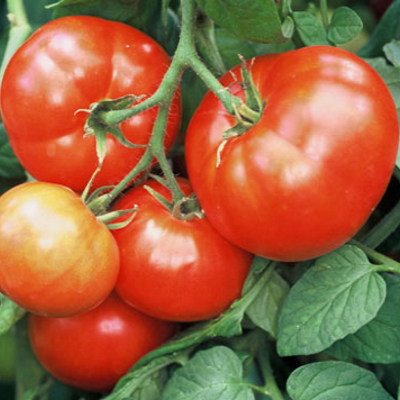 The perfect tomato plant for Calgary! This early maturing plant produces high yields of 280-450 gram deep red tomatoes which are 10-15 cm in diameter. They are sweet and flavorful. Perfect for salads, sandwiches, and canning. Plants will yield well even in cool weather. Cold tolerant. It is parthenocarpic, meaning it can set tomatoes without pollination. An excellent choice for home gardens. A variety developed in 1994 by Dr. James Baggett of Oregon State University, Oregon, USA. Disease Resistant: V, F. Determinate. Grown Organically. Start indoors, great for the greenhouse, and outdoor growing. Plants grow to 1-1.2 M tall.
The perfect tomato plant for Calgary! This early maturing plant produces high yields of 280-450 gram deep red tomatoes which are 10-15 cm in diameter. They are sweet and flavorful. Perfect for salads, sandwiches, and canning. Plants will yield well even in cool weather. Cold tolerant. It is parthenocarpic, meaning it can set tomatoes without pollination. An excellent choice for home gardens. A variety developed in 1994 by Dr. James Baggett of Oregon State University, Oregon, USA. Disease Resistant: V, F. Determinate. Grown Organically. Start indoors, great for the greenhouse, and outdoor growing. Plants grow to 1-1.2 M tall. -
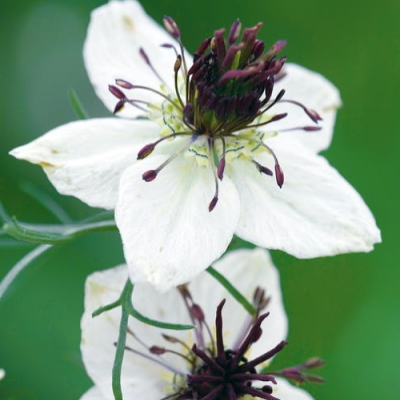
Nigella hispanica ‘Midnight’-African Bride Nigella seeds are also known as Love-in-a-Mist. Its delicate appearance belies its hardy, dependable nature. Each flower emerges from a tangle of lacy foliage. After blooming, curious-looking fruits ripen, dry, and eventually release seeds for the next season. These distinctive seed heads can be dried for flower arrangements. Everlasting flowers are grown especially for its spiky decorative seed pods. Germinates 10–14 days at 18° C. Grow on at 18-22 C. Set transplants 15-20 cm apart. For continuous bloom, direct seed weekly until June. Nigella grows 20–50cm tall.
-
Out of stock
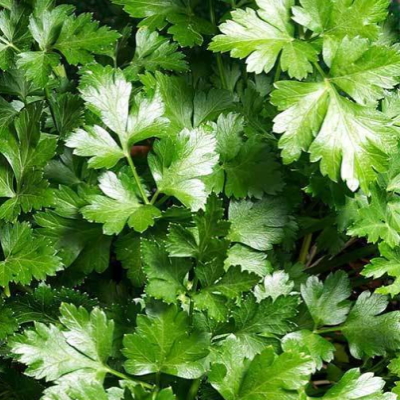 Biennial that is usually grown as an annual. We have found that this parsley dies back in the winter but new leaves emerge before the snow melts. Deeply cut bright green leaves. Italian parsley is reputed to have better flavor than the many curled varieties. Holds flavour when dried. Height 30-60 cm
Biennial that is usually grown as an annual. We have found that this parsley dies back in the winter but new leaves emerge before the snow melts. Deeply cut bright green leaves. Italian parsley is reputed to have better flavor than the many curled varieties. Holds flavour when dried. Height 30-60 cm
